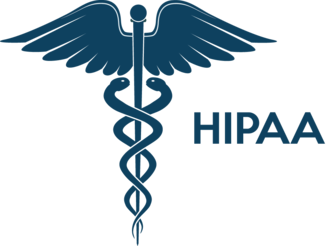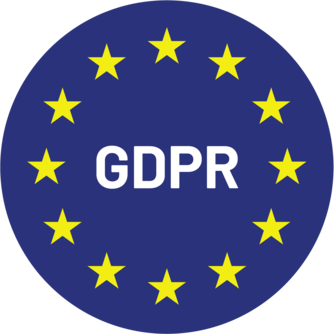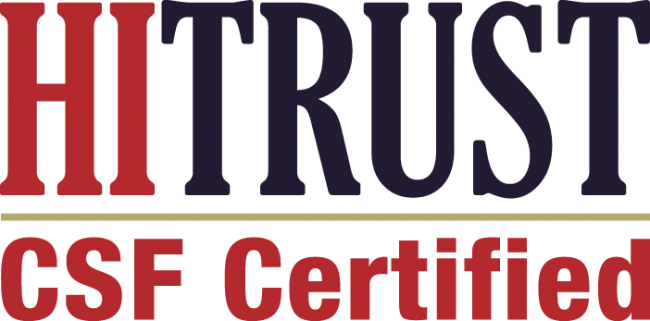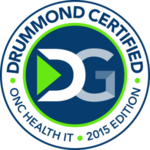Rural America faces a healthcare crisis that has been decades in the making. With vast distances between patients and providers, limited specialist availability, and ongoing facility closures, millions of Americans in rural communities struggle to access quality healthcare. However, innovative solutions like HealthViewX Remote Patient Monitoring (RPM) are emerging as game-changers, offering hope for bridging the healthcare gap and transforming patient outcomes in underserved areas.
The Rural Healthcare Crisis: By the Numbers
The statistics paint a sobering picture of healthcare accessibility in rural America. As of September 2024, 66.33% of Primary Care Health Professional Shortage Areas (HPSAs) were located in rural areas, highlighting the severe shortage of healthcare providers in these communities. This shortage is expected to worsen significantly in the coming years.
The research firm Mercer predicts that by 2025, the United States will likely face a shortage of nearly half a million home health aides, 95,000 nursing assistants, 98,700 medical and lab technologists and technicians, and 29,400 NPs. These projections underscore the urgent need for innovative healthcare delivery models that can bridge the gap between patients and providers.
The challenges extend beyond provider shortages. More than half of rural counties lacked hospital-based obstetric services in 2018, creating dangerous situations for expectant mothers who must travel long distances for prenatal care and delivery. Additionally, rural residents face higher risks of death due to factors like limited access to specialized medical care and emergency services, and exposure to specific environmental hazards.
Transportation barriers compound these challenges, with rural residents having greater transportation difficulties reaching health care providers, often traveling great distances to reach a doctor or hospital. Economic factors also play a role, as rural communities often face higher rates of poverty and unemployment, which can impact residents’ ability to afford services and secure transportation.
The Promise of Remote Patient Monitoring
Remote Patient Monitoring represents a paradigm shift in healthcare delivery, offering continuous, real-time monitoring of patients’ vital signs and health metrics from the comfort of their homes. This technology is particularly transformative for rural communities, where traditional healthcare access is limited.
Market Growth and Adoption
The RPM market is experiencing unprecedented growth. The global remote patient monitoring system market size is expected to register a compound annual growth rate (CAGR) of 18.6% from 2025 to 2030. This explosive growth reflects the increasing recognition of RPM’s value in improving patient outcomes while reducing costs.
By the year 2027, the remote patient monitoring systems market is projected to increase by 128% over the current market, indicating massive scaling opportunities for healthcare providers looking to expand their reach into underserved rural areas.
Clinical Outcomes and Patient Satisfaction
The clinical benefits of RPM are substantial and well-documented. RPM can lower patient mortality rates by 45%, improving overall patient outcomes. Emergency room visits can decrease by 38% with the implementation of RPM systems. Hospital admissions are reduced by 50% for patients using RPM technologies.
These dramatic improvements in patient outcomes are particularly crucial for rural populations who often delay seeking care due to distance and accessibility barriers. By bringing continuous monitoring into patients’ homes, RPM enables early detection of health issues before they become critical emergencies requiring expensive interventions.
Patient satisfaction with RPM services is remarkably high. In a 2023 survey of physicians and executives, 67% of respondents said RPM had a high impact on patient satisfaction. Patients consider it a “concierge service” that engages them with their health.
Economic Benefits
The financial advantages of RPM extend beyond improved patient outcomes. By delivering 20 minutes of remote patient monitoring per month, each Medicare beneficiary can generate reimbursement of more than $1,000 over 12 months. This reimbursement structure makes RPM financially viable for healthcare providers while improving access to care for patients.
RPM devices lead to a 56% reduction in hospitalizations, translating to significant cost savings for both healthcare systems and patients. For rural healthcare providers operating on thin margins, these cost reductions can mean the difference between sustainability and closure.
HealthViewX: Leading the Rural Healthcare Transformation
HealthViewX has positioned itself at the forefront of the rural healthcare revolution through its comprehensive RPM platform. The company’s solution addresses the unique challenges faced by rural communities by providing:
Comprehensive Remote Monitoring Capabilities
HealthViewX’s platform supports monitoring of various chronic conditions prevalent in rural populations, including diabetes, hypertension, heart disease, and COPD. The system integrates with multiple FDA-approved devices, allowing patients to track vital signs, blood glucose levels, blood pressure, weight, and other critical health metrics from home.
User-Friendly Technology
Recognizing that rural populations may have limited technical expertise, HealthViewX has designed its platform with simplicity in mind. The intuitive interface ensures that patients of all ages and technical abilities can successfully engage with the monitoring system, removing barriers to adoption.
Clinical Integration and Workflow Optimization
The platform seamlessly integrates with existing Electronic Health Record (EHR) systems, allowing rural healthcare providers to monitor multiple patients efficiently without disrupting their established workflows. Real-time alerts and customizable dashboards enable providers to prioritize interventions and focus on patients who need immediate attention.
Scalable Solutions for Rural Healthcare Networks
HealthViewX’s architecture supports scalability, making it suitable for both individual rural practices and larger healthcare networks serving multiple rural communities. This scalability ensures that as rural healthcare needs grow, the platform can expand to meet demand.
Addressing Rural-Specific Challenges
Connectivity and Infrastructure
Rural areas often struggle with limited internet connectivity, which can pose challenges for RPM implementation. HealthViewX addresses this by offering solutions that work with various connectivity options, including cellular networks and satellite internet, ensuring reliable data transmission even in remote locations.
Provider Training and Support
Recognizing that rural healthcare providers may have limited resources for training and implementation, HealthViewX provides comprehensive support services, including training programs, technical support, and ongoing consultation to ensure successful program deployment and maintenance.
Patient Education and Engagement
Rural populations may be less familiar with digital health technologies, making patient education crucial for successful RPM implementation. HealthViewX offers educational resources and support to help patients understand the value of remote monitoring and how to use the technology effectively.
Real-World Impact: Transforming Rural Healthcare Outcomes
The implementation of HealthViewX RPM in rural communities has demonstrated measurable improvements in key healthcare metrics:
Chronic Disease Management
Rural populations have higher rates of chronic diseases, including diabetes and cardiovascular conditions. RPM enables continuous monitoring of these conditions, allowing for timely interventions that prevent complications and hospitalizations. Patients with diabetes can monitor blood glucose levels daily, while those with heart conditions can track vital signs that indicate potential cardiac events.
Medication Adherence
Medication non-adherence is a significant problem in rural areas, often due to limited pharmacy access and infrequent provider visits. RPM platforms include medication reminders and tracking capabilities that help patients stay compliant with their treatment regimens, improving outcomes and reducing complications.
Early Detection and Prevention
The continuous monitoring capabilities of RPM enable early detection of health deterioration, allowing healthcare providers to intervene before conditions become severe. This proactive approach is particularly valuable in rural areas where emergency services may be limited or distant.
The Future of Rural Healthcare with RPM
Telemedicine Integration
The combination of RPM with telemedicine services creates a comprehensive virtual care model that can effectively serve rural populations. Patients can receive both continuous monitoring and virtual consultations, reducing the need for long-distance travel to healthcare facilities.
Overcoming Implementation Barriers
While the benefits of RPM are clear, successful implementation in rural areas requires addressing several challenges:
Digital Literacy
Healthcare providers must invest in patient education to ensure the successful adoption of RPM technologies. This includes training on device usage, data interpretation, and when to seek additional care.
Reimbursement and Financial Sustainability
Understanding and navigating reimbursement models is crucial for rural healthcare providers considering RPM implementation. The Medicare reimbursement structure for RPM provides a foundation for financial sustainability, but providers must understand billing requirements and documentation needs.
Privacy and Security
Rural healthcare providers must ensure that RPM platforms comply with HIPAA and other privacy regulations. Choosing platforms with robust security features and providing staff training on data protection are essential components of successful implementation.
Looking Ahead: A Transformed Rural Healthcare Landscape
The integration of HealthViewX Remote Patient Monitoring into rural healthcare represents more than just a technological upgrade – it’s a fundamental transformation of how healthcare is delivered in underserved communities. By bringing continuous, high-quality monitoring directly to patients’ homes, RPM addresses the core challenges that have long plagued rural healthcare: distance, provider shortages, and limited access to specialized care.
The statistics speak for themselves: reduced mortality rates, fewer emergency room visits, decreased hospitalizations, and improved patient satisfaction. For rural communities that have struggled with healthcare access for generations, these improvements represent hope for a healthier future.
As the RPM market continues its rapid growth and technology advances, the potential for even greater impact in rural healthcare becomes increasingly apparent. Healthcare providers who embrace this transformation today will be well-positioned to serve their communities more effectively while building sustainable, financially viable practices.
The future of rural healthcare is being written now, and HealthViewX Remote Patient Monitoring is helping to author a story of improved access, better outcomes, and renewed hope for millions of Americans living in rural communities. The question is not whether RPM will transform rural healthcare – it’s how quickly rural providers will embrace this revolutionary approach to patient care.
Conclusion
The transformation of rural healthcare through HealthViewX Remote Patient Monitoring represents a critical opportunity to address longstanding healthcare disparities and improve outcomes for millions of Americans. With proven clinical benefits, strong economic incentives, and growing technological capabilities, RPM offers a viable path forward for rural healthcare providers seeking to expand their reach and improve patient care.
The time for action is now. Rural healthcare providers who implement comprehensive RPM solutions today will not only improve outcomes for their current patients but also position themselves as leaders in the evolving healthcare landscape. As the statistics demonstrate, the benefits are clear, the technology is ready, and the need is urgent. The transformation of rural healthcare begins with taking the first step toward remote patient monitoring implementation.

